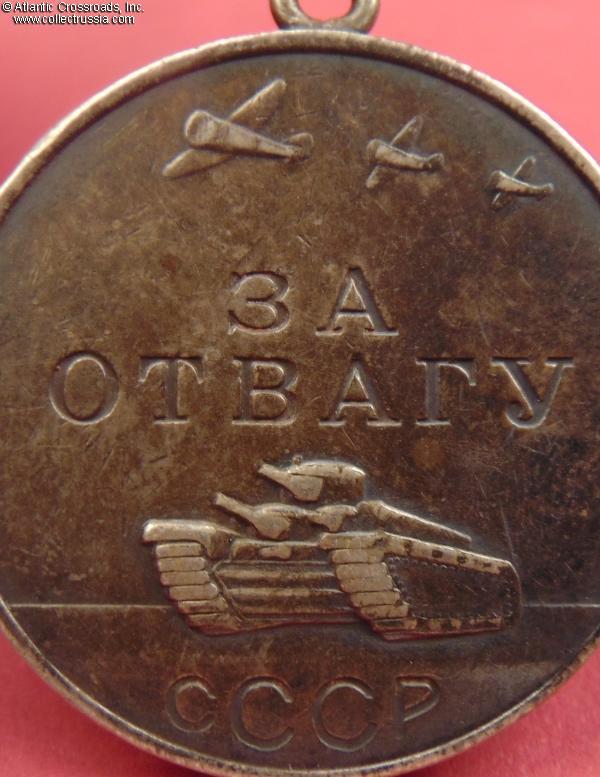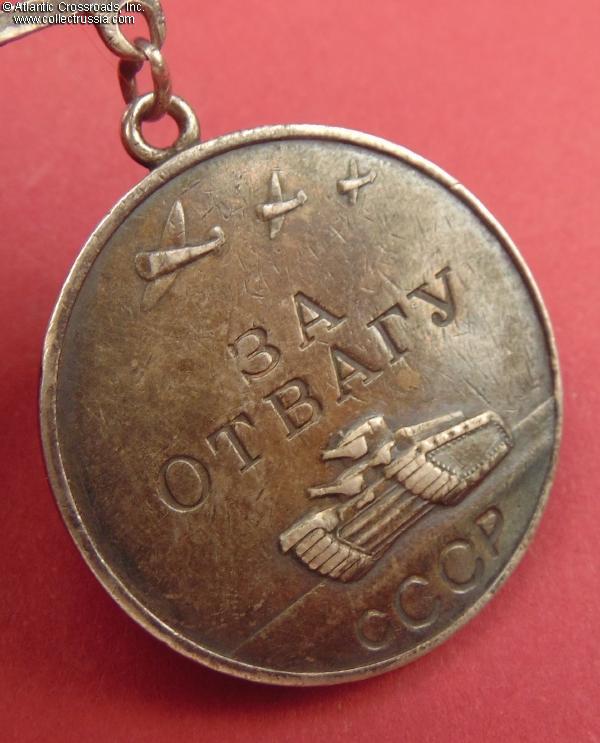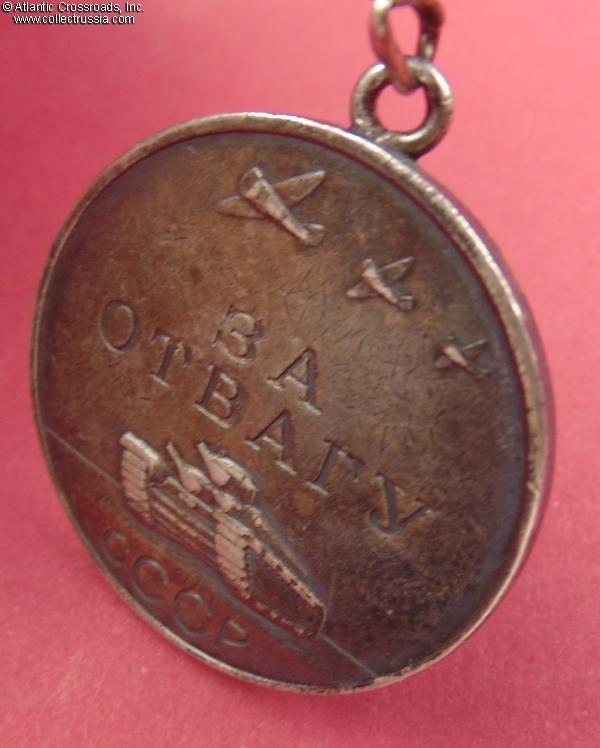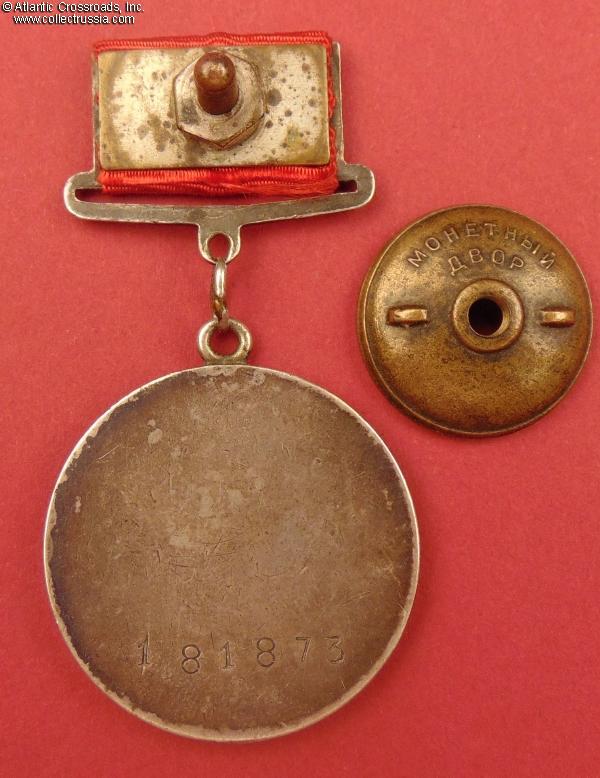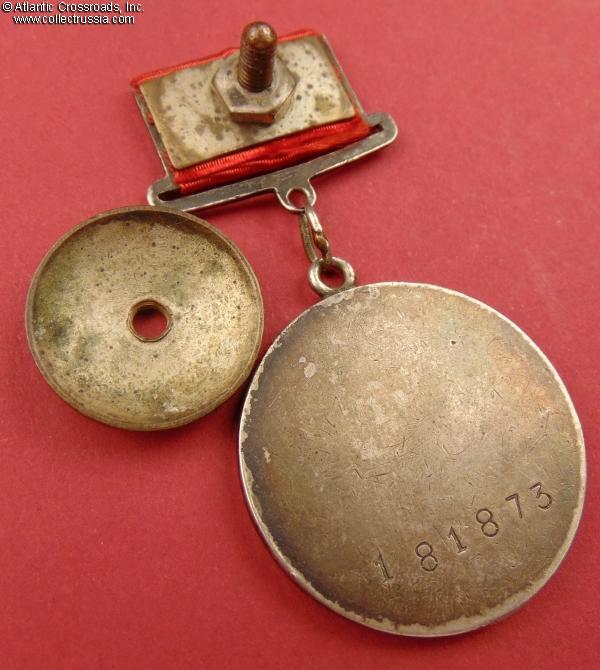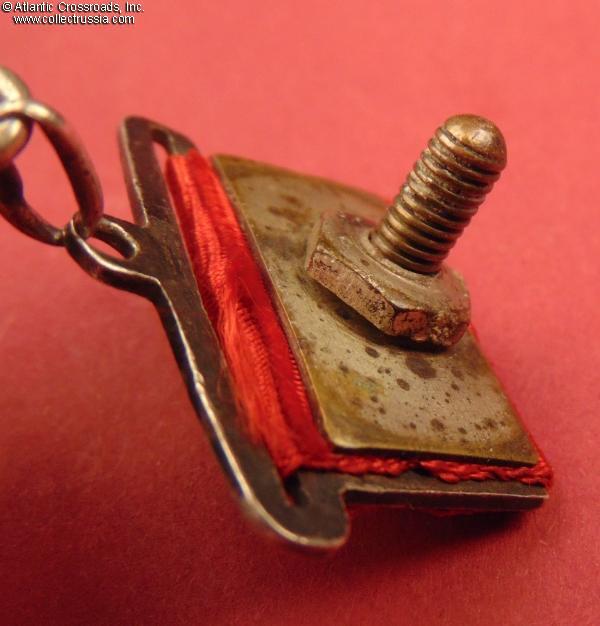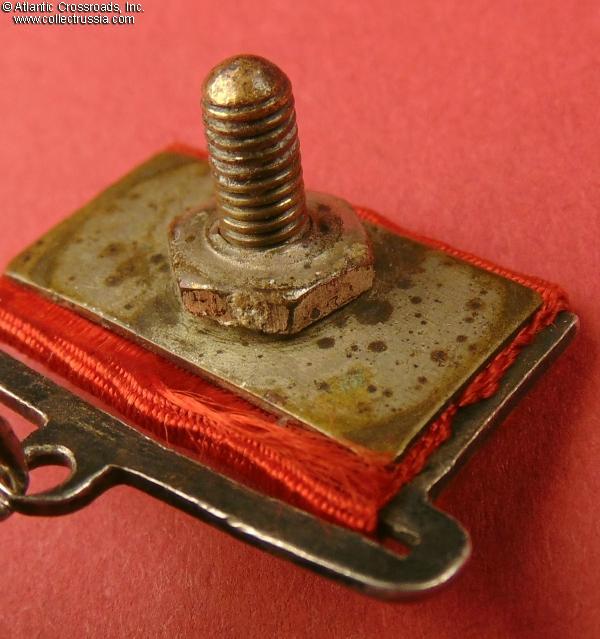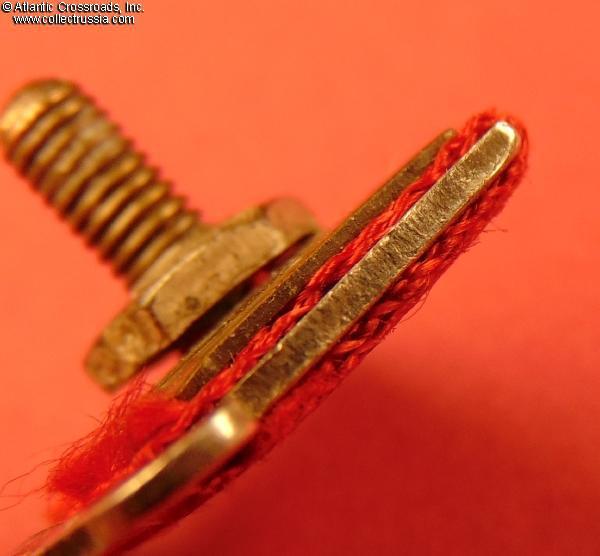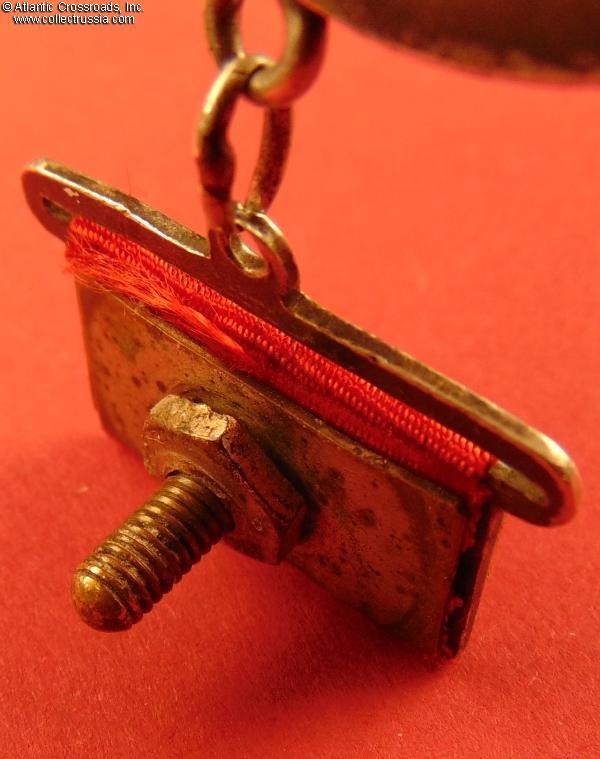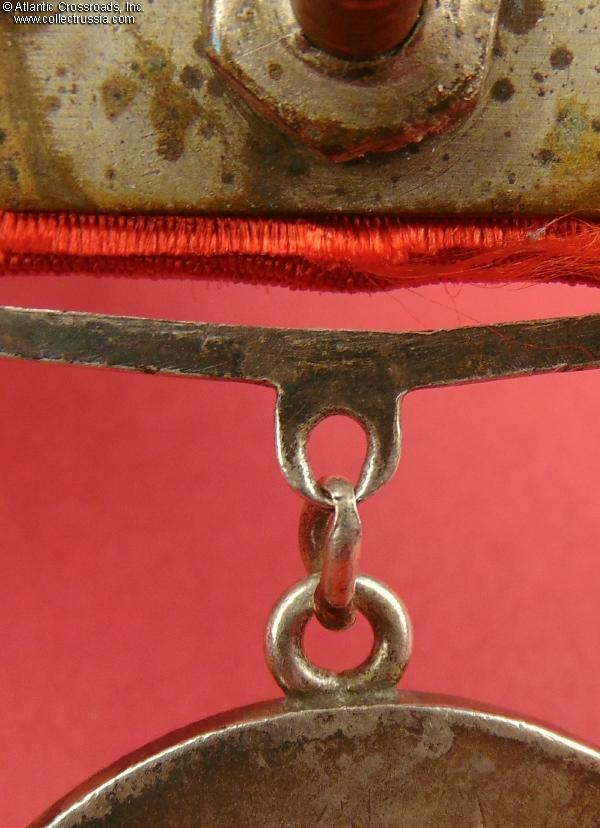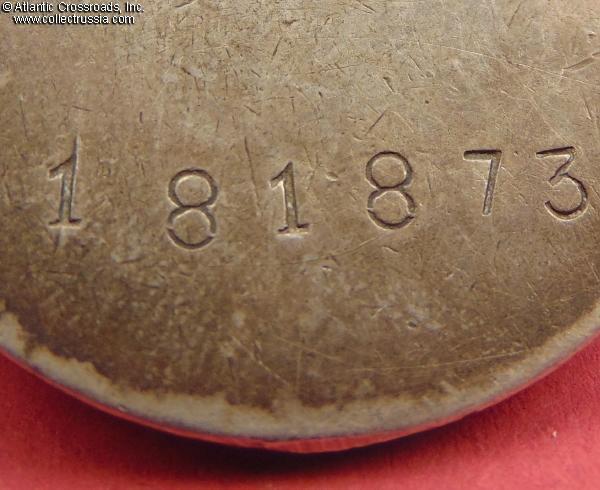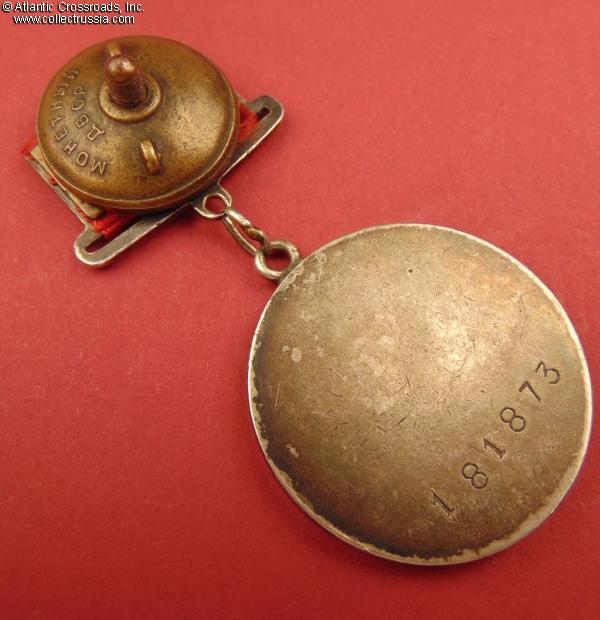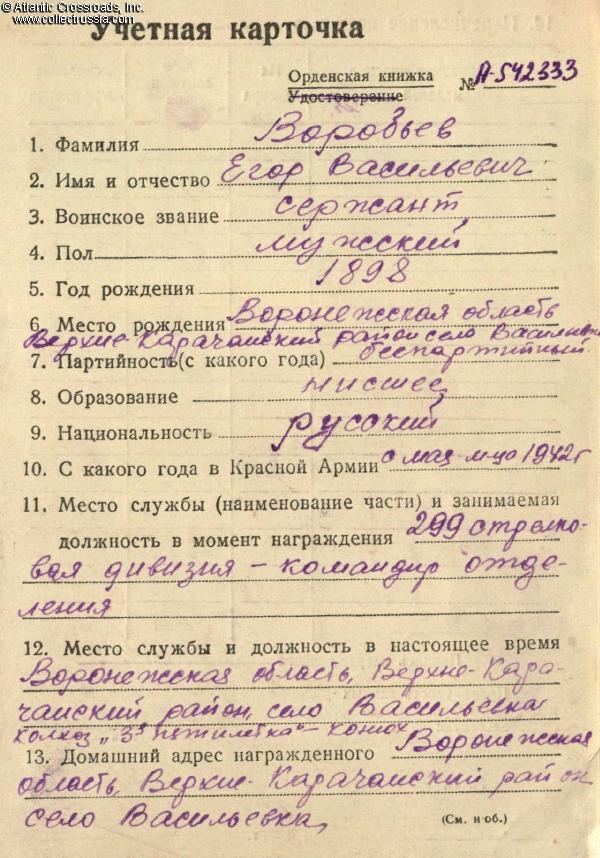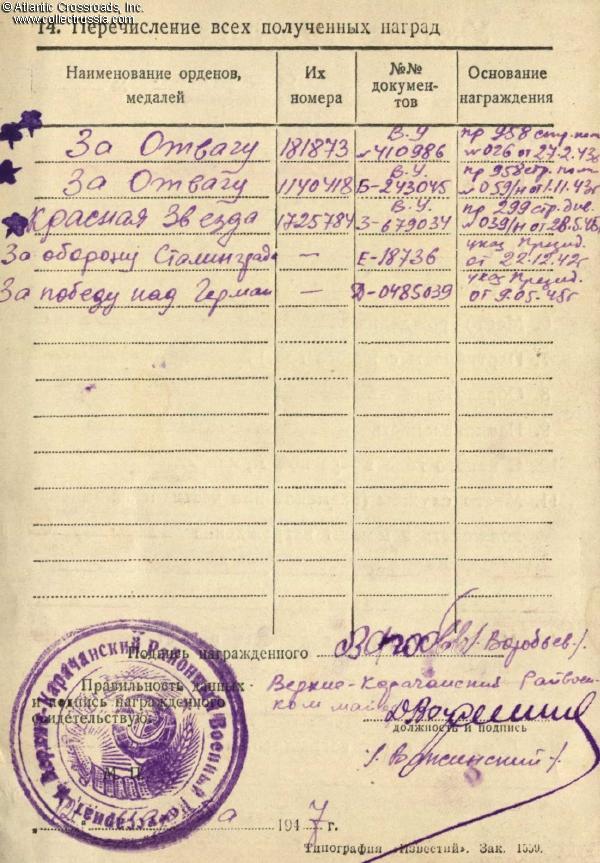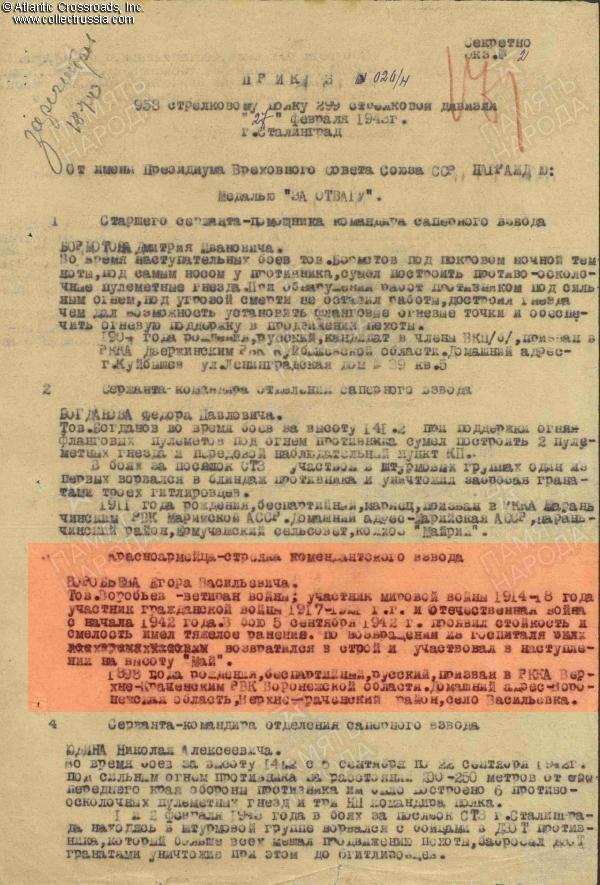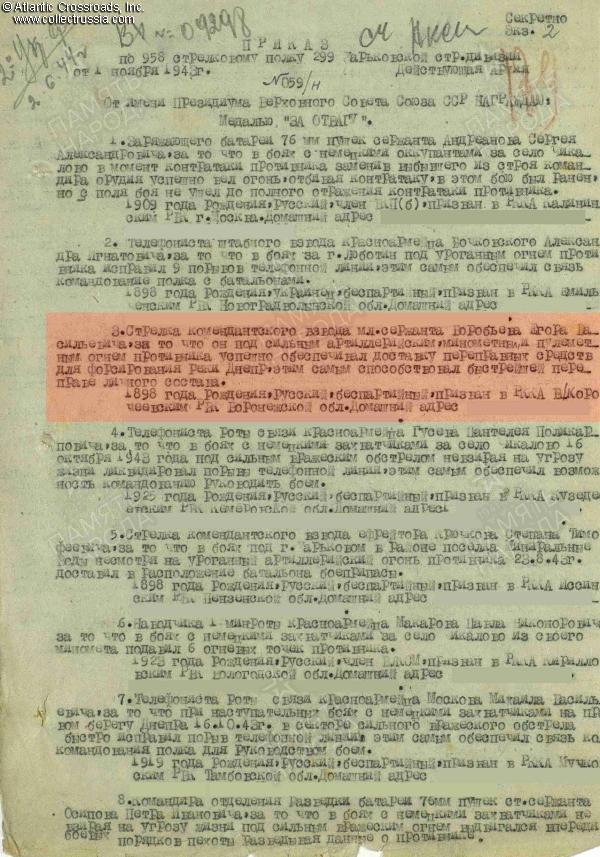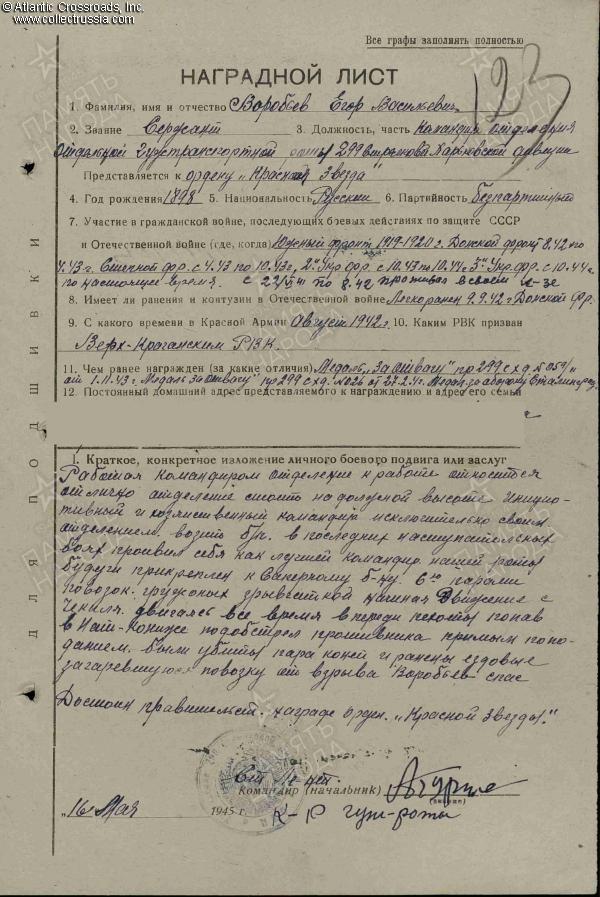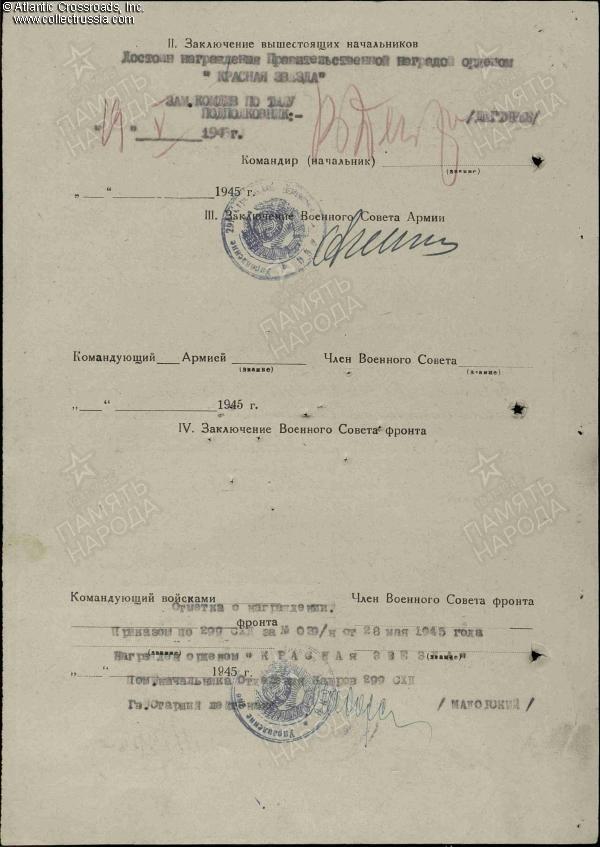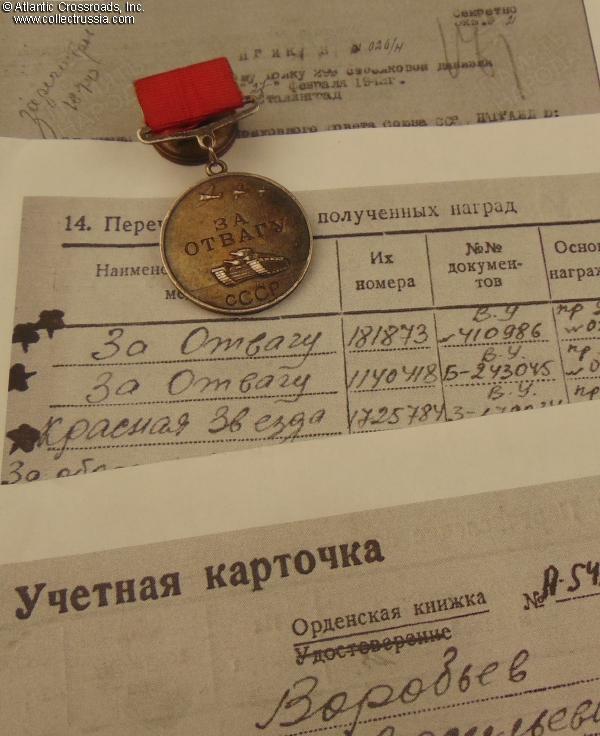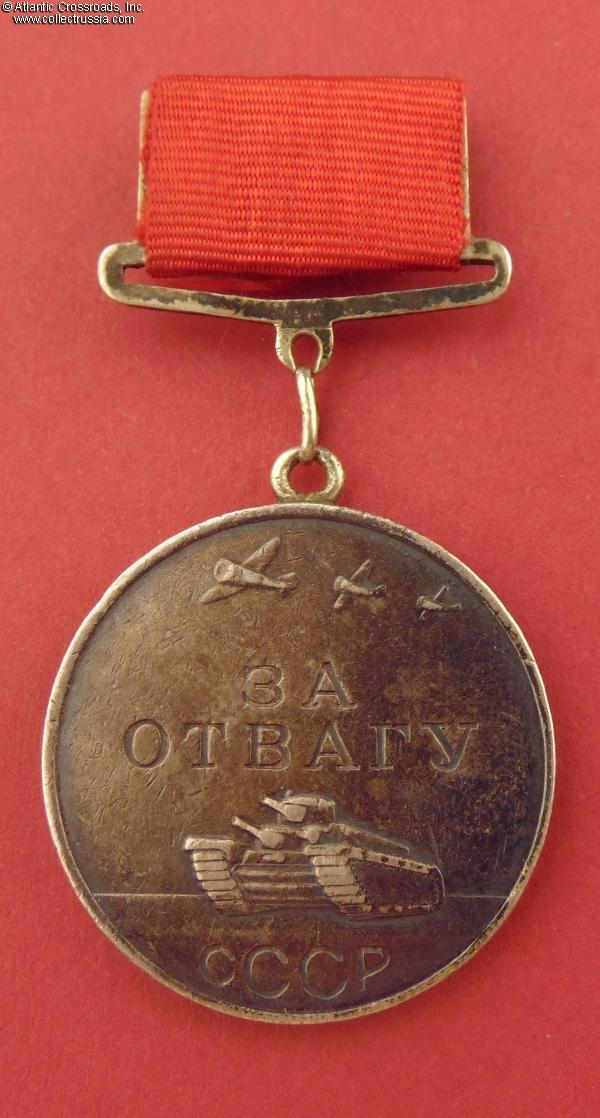
Medal for Valor, Type 1 Variation 3, "Thin" sub-variation, #181873, awarded on 27 February 1943 to Sergeant Yegor Vorobyev (Егор Васильевич Воробьев), Private of the 958th Rifle Regiment, 299th Rifle Division, 66th Army, Don Front.
The medallion is in silver; measures 42.1 mm in height incl. eyelet, 37.3 mm wide, approx. 2.3- 2.5 mm thick at the edge (the so-called "Thin" sub-variation); weighs 29.1 g not including the suspension and connecting link. The suspension measures 25.0 mm wide at the top, 17.5 mm tall not including the ribbon and projection for the connecting link.
Very fine condition. The fragile red lacquer in the letters is missing, as is typically the case with the early issues of this medal. There are some tiny dings throughout the medallion, a result of normal everyday wear, but no sign
The medallion is in silver; measures 42.1 mm in height incl. eyelet, 37.3 mm wide, approx. 2.3- 2.5 mm thick at the edge (the so-called "Thin" sub-variation); weighs 29.1 g not including the suspension and connecting link. The suspension measures 25.0 mm wide at the top, 17.5 mm tall not including the ribbon and projection for the connecting link.
Very fine condition. The fragile red lacquer in the letters is missing, as is typically the case with the early issues of this medal. There are some tiny dings throughout the medallion, a result of normal everyday wear, but no significant scratches, nicks, or edge bumps. The artwork shows a minor amount of wear to the high points, but its details remain well-defined. Both sides of the medallion exhibit a very attractive dark patina.
The medal comes on the original suspension device, complete with the original silver-plated back plate, hexagon nut, and brass screw plate. The lower part of the suspension is deformed from the weight of the medal but remains sound. The screw post is full length, over 10 mm measured from the back plate. The beautifully preserved, clean old ribbon is likely original to the medal. The connecting link appears to be original as well and although thinned and stretched by the friction and weight of the medallion, remains sound; its ends are still joined with solder.
Yegor Vorobyev was born in 1898 in a village of the Voronezh province of Russia. In 1914, then just 156 years of age, he enlisted in the Imperial Army, fought in the First World War almost until its end, and from 1917-1919 took part in the Russian Civil War. In May 1942, at the age of 44, he was drafted into the Red Army again. Later that year, he took part in the Battle of Stalingrad as a private of the 958th Rifle Regiment, 299th Rifle Division.
The unit was formed only in June of that year and soon sent to Stalingrad as a part of the 66th Army. Deployed just to the north of the city throughout the defensive phase of the battle, the army constantly counterattacked, harassing the northern flank of the German VI Army in Stalingrad and drawing its dwindling resources away from the city. One such counterattack, supported by the 1st Shock Army, commenced on the morning of 5 September and was soon joined by the 24th Army. On the first day of this operation, Vorobyev was seriously wounded in action and sent to a field hospital. In the meantime, the Soviet effort in the sector was unable to make progress - in part because two of the Soviet armies engaged, including the 66th , were not yet fully assembled and had to feed their divisions into the battle in a piecemeal fashion. Nevertheless, Soviet counter attacks from the north would continue for days almost without interruption, upsetting the VI Army's timetable and temporarily discouraging its advance into the central part of the city. It also forced Paulus to briefly divert all of his air support to the north.
Following a convalescence in the hospital, Vorobyev returned to his unit just before the conclusion of the Battle of Stalingrad. In its last days, the 299th Rifle Division along with the rest of the 66th Army, then under the Don Front, took part in the destruction of the German pocket. At the start of Operation Koltso ("Ring"), the 299th Rifle Division was positioned just southwest of the settlement of Yerszovka on the bank of the Volga north of Stalingrad. After the surrender of Paulus and his staff, the last German holdouts continued to fight for another two days in the rubble of the city's center and to the north. On 1 February, the Soviet 66th and 64th Armies launched the final assault against the remnants of the German XI Army Corps. The 299th Rifle Division advanced from a bridgehead on the Mokraya Mechetka River into the western part of the Barrikady Gun Factory village. At some point during or just before this final effort, Vorobyev participated in an infantry assault on the height referred to as "May" in the subsequent award citation.
On 27 February 1943, while his division was taking a respite in the recently liberated Stalingrad, Vorobyev along with a number of other enlisted soldiers of his regiment was awarded with his first decoration of the war, the Medal for Valor. The 299th Rifle Division was then transferred to the 53rd Army of the Steppe Front and distinguished itself in the liberation of Kharkov in August 1943, earning an honorific title of "Kharkovskaya". Several weeks later, it took part in the forced crossing of the Dnieper. During this operation, Vorobyev earned his second Medal for Valor by delivering the means of crossing the river to his unit under strong enemy fire. The medal was bestowed upon him on 1 November 1943.
By the end of the war, Vorobyev had been promoted to sergeant and put in charge of a horse transportation squad of the 299th Regiment. In the last months of the war, his unit was a part of the 57th Army which after supporting Tito's partisan forces in Yugoslavia, advanced into Hungary south of Lake Balaton. During that time, Vorobyev's squad was attached to the regiment's sapper battalion. Vorobyev proved himself as a courageous soldier and was always in the lead while delivering explosives on his horse-drawn carriage. When one of the wagons in his detachment received a direct hit killing the horses and disabling the drivers, he managed to rescue the burning wagon and prevented its cargo from blowing up. On 28 May 1945, he was decorated for this feat with the Order of the Red Star, his final award of WW2. He was released from active duty soon afterwards and returned to his native village of Vasilyevka in Voronezh region, where he got a job as a horse groom at a collective farm.
Research Materials: b/w photocopy of the award record card and award decrees for the two Medals for Valor (both containing a brief
citation) and award commendation for the Order of the Red Star. A history of the 299th Rifle Division is available in the Volume X Red
Swarm of Charles Sharp's book series Soviet Order of Battle, WW2.
$725.00 Add to cart

